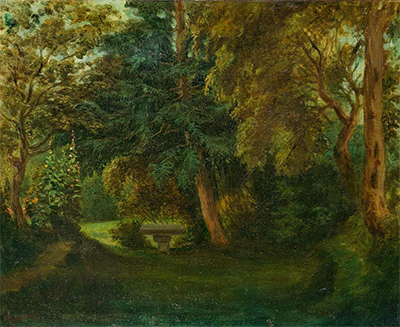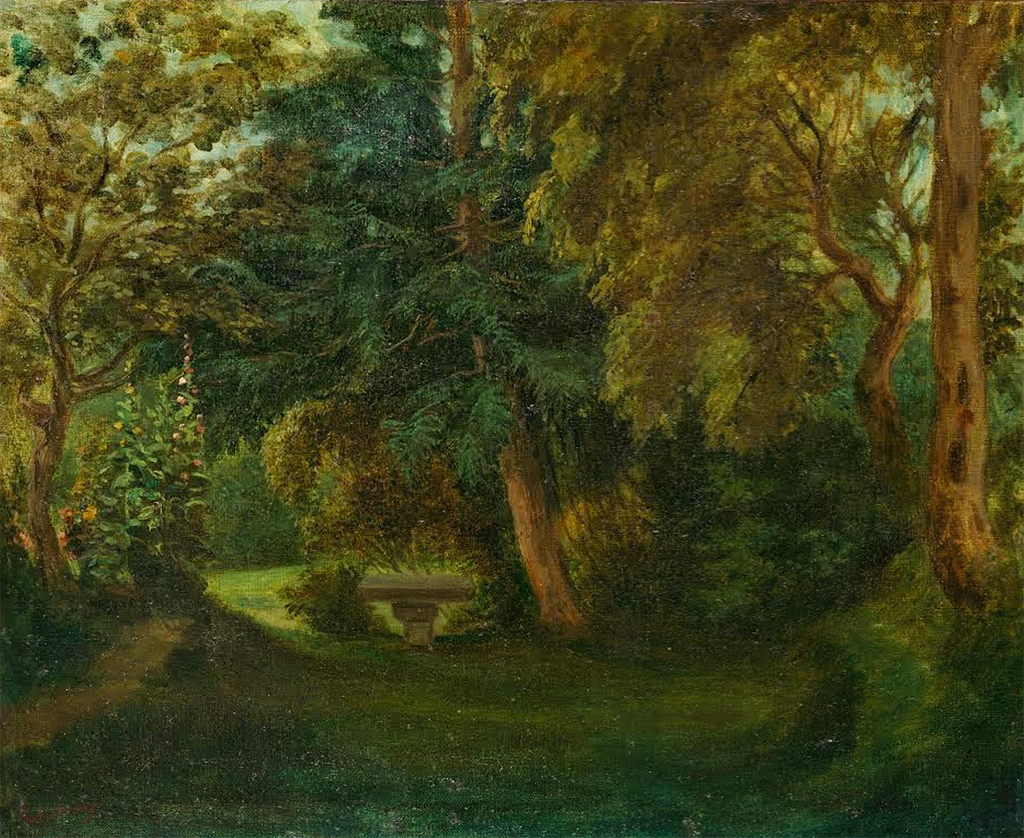George Sand was the pen name of a famous female writer who appears in several paintings by Eugene Delacroix. Most famously she appeared alongside Frederic Chopin in a piece that was later cut up into single portraits.
This painting delivers a charming private garden, with a shaded walkway leading through to a more open area at the foot of the garden. There is a mixture of trees that are arranged fairly naturally, and a number of pretty plants within a setting that is landscaped but without being too formal. Perhaps the writer would relax here, and sometimes compose some of her best pieces. There also appears to be a small piece of garden furniture at the bottom of this part of the garden, most likely made of simply-carved stone table or bench. The content is certainly unusual for this artist, though so were the portraits that he made of the same woman. There is no real focal point within this scene, certainly nothing as obvious as within the majority of his work.
The painting is dated as 1842–43 and we do know that Delacroix visited this location a number of times over several summers. That might explain why several different years could potentially have been when it was produced. Delacroix was good friends with Aurore Dudevant, her real name, and they are likely to have shared their creative thoughts together in a spirit of collaboration. Delacroix himself was deeply interested in literature and would use it as the basis for many of his paintings. Romanticism was also as much about literature as it was visual art, and so he could not be a part of this style without having an understanding of both strands of it. Research has revealed George Sand's house to be a stunning country home, where one would have longed to visit and for a taste of the quiet life for a short period.
The understanding around this artwork suggests that it was a gift for his friend from Delacroix, and so only had to be suitable in style and composition for her. This all makes sense once you accept that point, as this non-descript garden scene would not make much sense to anyone else. Art as gifts was very common in French art at around this period, and could also sometimes be used as a means to network and boost one's standing. In this case, though, this was purely the exchange of friendship between two individuals who were connected through the creative industries and who also felt a deep respect for each other. We must not forget the sexist nature of the art world for many centuries, and literature was not that different, making this a cherished relationship where ideas and opinions were freely expressed and respected always.





